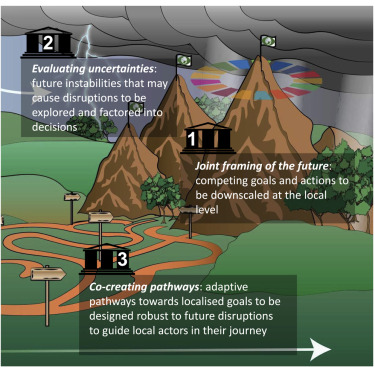The Sustainable Development Goals (SDGs), established by the United Nations in 2015, provide a comprehensive framework for addressing global challenges and promoting sustainable development across economic, social, and environmental dimensions. Higher education institutions play a crucial role in advancing the SDGs through research, education, and practical initiatives that contribute to environmental sustainability. Let’s explore how higher education institutions can align with the SDGs and implement environmental initiatives to address pressing environmental issues:
1. Goal 7: Affordable and Clean Energy
- Renewable Energy: Implement renewable energy projects, such as solar panels, wind turbines, and geothermal systems, to reduce reliance on fossil fuels and promote clean energy production on campus.
- Energy Efficiency: Improve energy efficiency in campus operations, buildings, and infrastructure through energy audits, retrofits, and energy-saving technologies to minimize energy consumption and greenhouse gas emissions.
2. Goal 11: Sustainable Cities and Communities
- Urban Sustainability: Engage in research, planning, and community partnerships to promote sustainable urban development, green infrastructure, and eco-friendly transportation solutions that enhance the resilience and livability of cities and communities.
- Campus Planning: Integrate sustainable design principles, green building standards, and smart growth strategies into campus master planning and development projects to create healthy, walkable, and environmentally responsible campus environments.
3. Goal 12: Responsible Consumption and Production
- Waste Reduction: Implement waste reduction programs, recycling initiatives, and circular economy practices to minimize waste generation, promote resource conservation, and encourage responsible consumption and production patterns on campus.
- Sustainable Procurement: Source environmentally preferable products, materials, and services that meet sustainability criteria, support ethical supply chains, and minimize environmental impacts throughout the procurement process.
4. Goal 13: Climate Action
- Carbon Neutrality: Commit to carbon neutrality goals and develop climate action plans that outline strategies for reducing greenhouse gas emissions, increasing carbon sequestration, and adapting to the impacts of climate change on campus.
- Climate Education: Integrate climate change education, research, and outreach initiatives into academic programs, extracurricular activities, and campus events to raise awareness and empower students to take action on climate issues.
5. Goal 14: Life Below Water and Goal 15: Life on Land
- Biodiversity Conservation: Support biodiversity conservation efforts, habitat restoration projects, and ecological stewardship initiatives that protect marine and terrestrial ecosystems, preserve biodiversity, and promote sustainable land and water management practices.
- Environmental Education: Offer experiential learning opportunities, field studies, and research projects that explore marine and terrestrial ecosystems, ecological restoration techniques, and conservation strategies to foster environmental literacy and stewardship.
6. Goal 17: Partnerships for the Goals
- Collaborative Initiatives: Forge partnerships with government agencies, non-profit organizations, businesses, and local communities to leverage resources, share expertise, and collaborate on environmental initiatives that advance shared sustainability goals.
- Global Engagement: Engage in international partnerships, research collaborations, and knowledge exchange programs that address transboundary environmental challenges, promote cross-cultural understanding, and foster global cooperation on sustainability issues.
Conclusion
Higher education institutions have a critical role to play in advancing the Sustainable Development Goals and promoting environmental sustainability through research, education, and practical initiatives. By aligning with the SDGs and implementing environmental initiatives that address pressing environmental challenges, campuses can contribute to a more sustainable and resilient future for all. Through interdisciplinary collaboration, community engagement, and global partnerships, higher education institutions can leverage their expertise, resources, and influence to drive positive change and inspire the next generation of environmental leaders and innovators.



